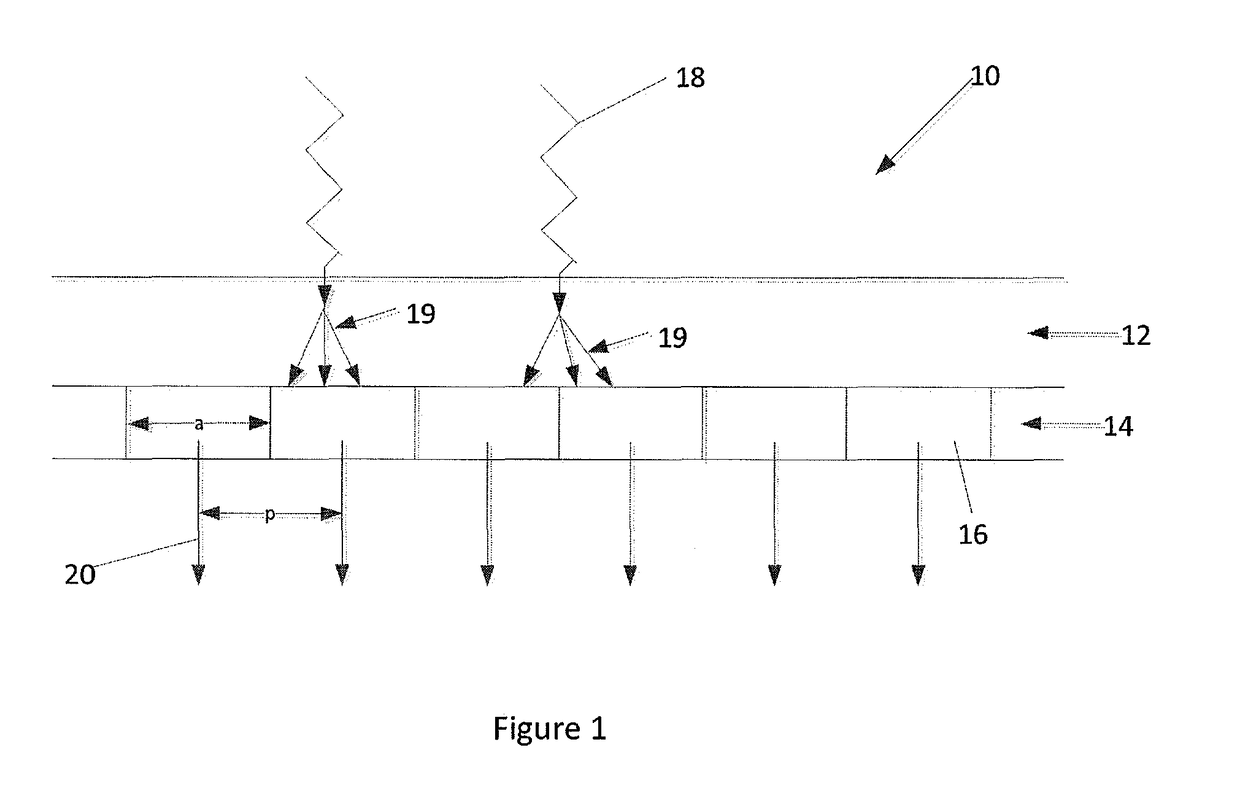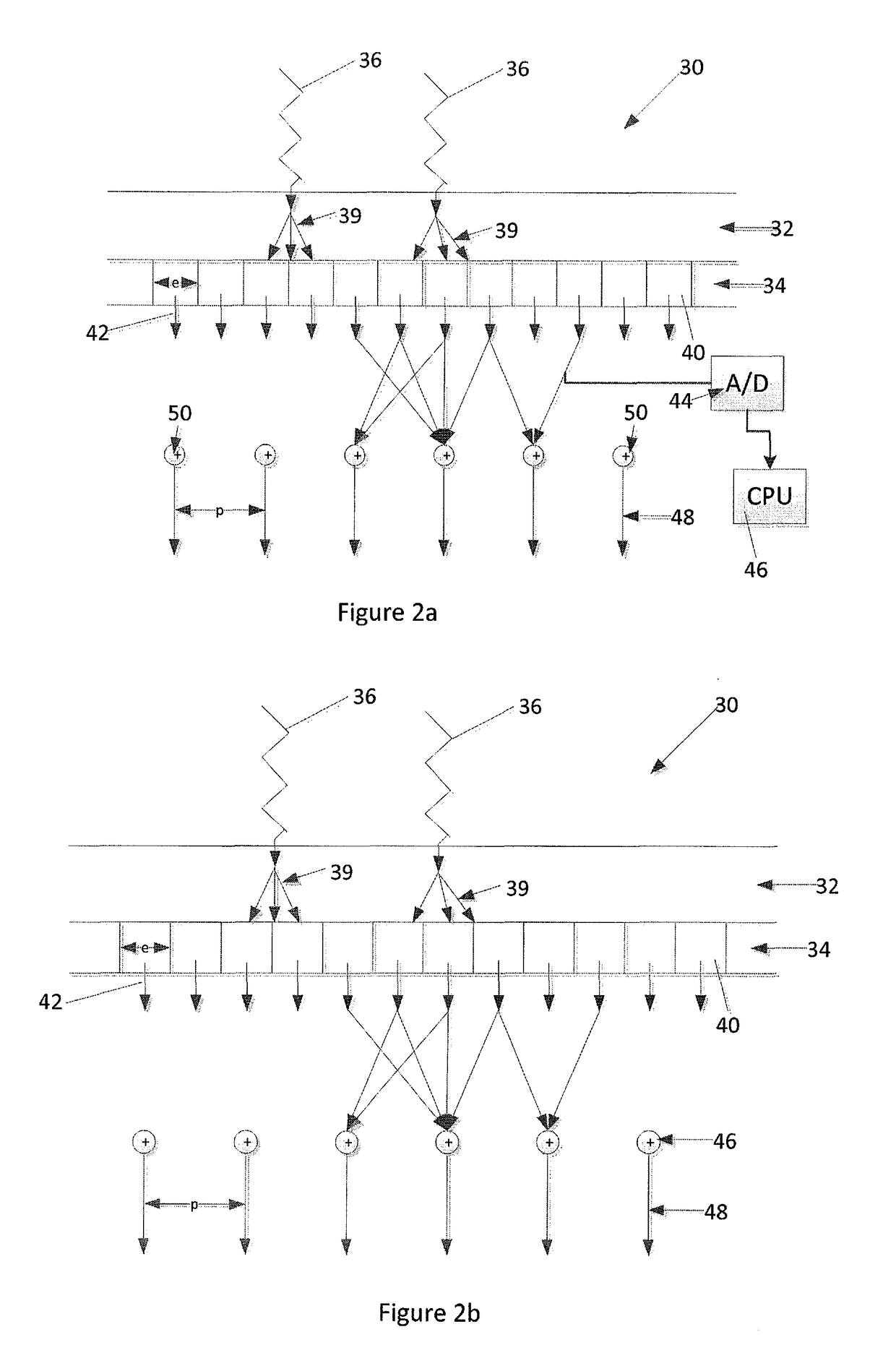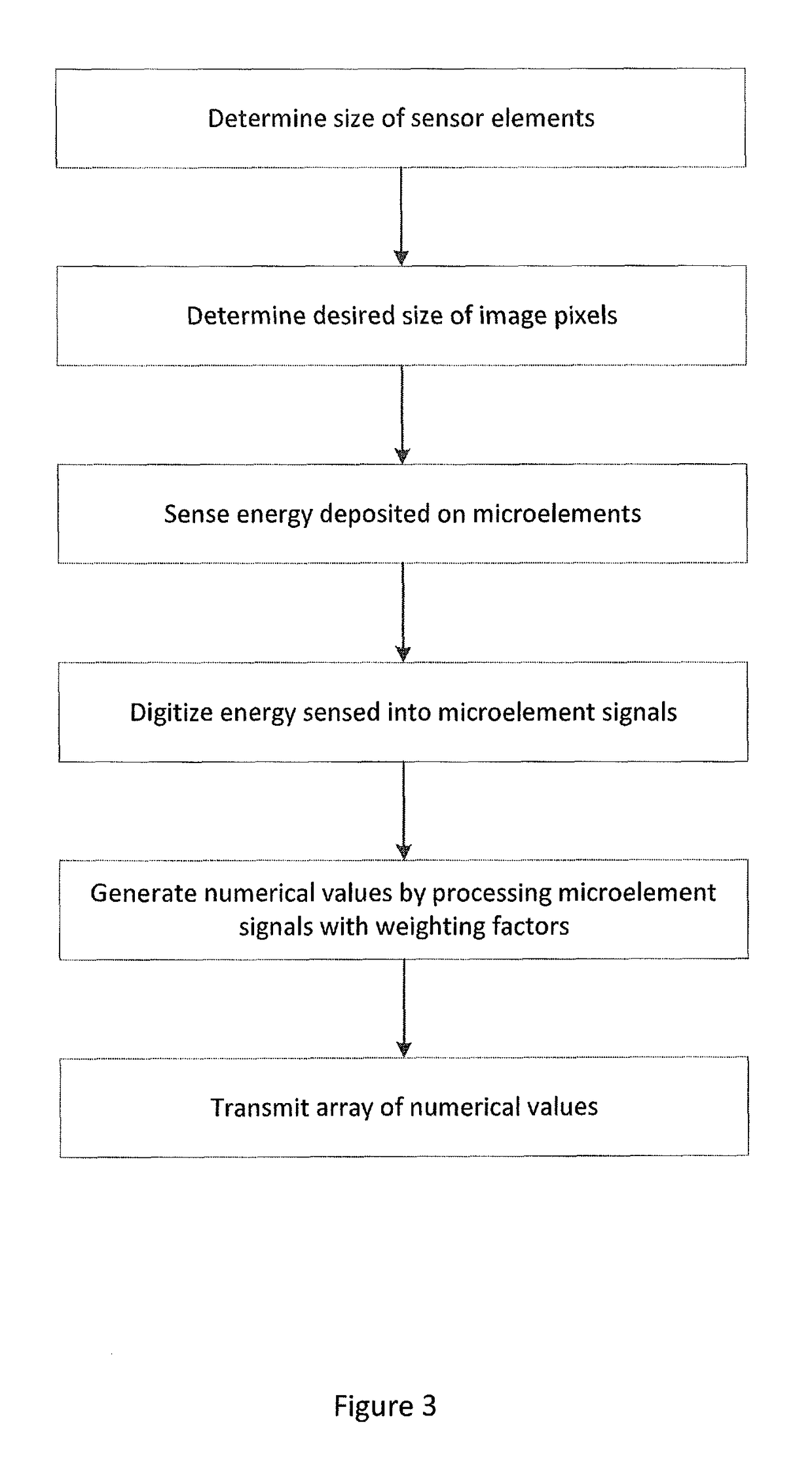Method and apparatus for improved detective quantum efficiency in an X-ray detector
a quantum efficiency and detector technology, applied in the field of x-ray detectors, can solve the problems of dqe degradation, noise aliasing, dqe always decreasing with increasing frequency, etc., and achieve the effect of improving modulation transfer function and detective quantum efficiency
- Summary
- Abstract
- Description
- Claims
- Application Information
AI Technical Summary
Benefits of technology
Problems solved by technology
Method used
Image
Examples
Embodiment Construction
[0026]The disclosure is directed at a method and apparatus for improved modulation transfer function (MTF) and detective quantum efficiency (DQE) of X-ray detectors. Both MTF and DQE are typically expressed as a curve as a function of spatial frequency, or as particular values at particular spatial frequencies. In one embodiment, the disclosure is directed at improving or optimizing a MTF curve along with DQE values using data from small pixels, or microelements, within the X-ray detector.
[0027]For clarity, in the following description, the term “signal” refers to charges collected in the microelements that were liberated either directly or indirectly from the absorption of X-ray energy. Direct-type sensors are sensitive to charges liberated directly by absorption of X-ray energy while indirect-type sensors are sensitive to charges liberated by the absorption of optical quanta that were generated as a result of absorption of X-ray energy. The term signals may also include other meas...
PUM
 Login to View More
Login to View More Abstract
Description
Claims
Application Information
 Login to View More
Login to View More - R&D
- Intellectual Property
- Life Sciences
- Materials
- Tech Scout
- Unparalleled Data Quality
- Higher Quality Content
- 60% Fewer Hallucinations
Browse by: Latest US Patents, China's latest patents, Technical Efficacy Thesaurus, Application Domain, Technology Topic, Popular Technical Reports.
© 2025 PatSnap. All rights reserved.Legal|Privacy policy|Modern Slavery Act Transparency Statement|Sitemap|About US| Contact US: help@patsnap.com



